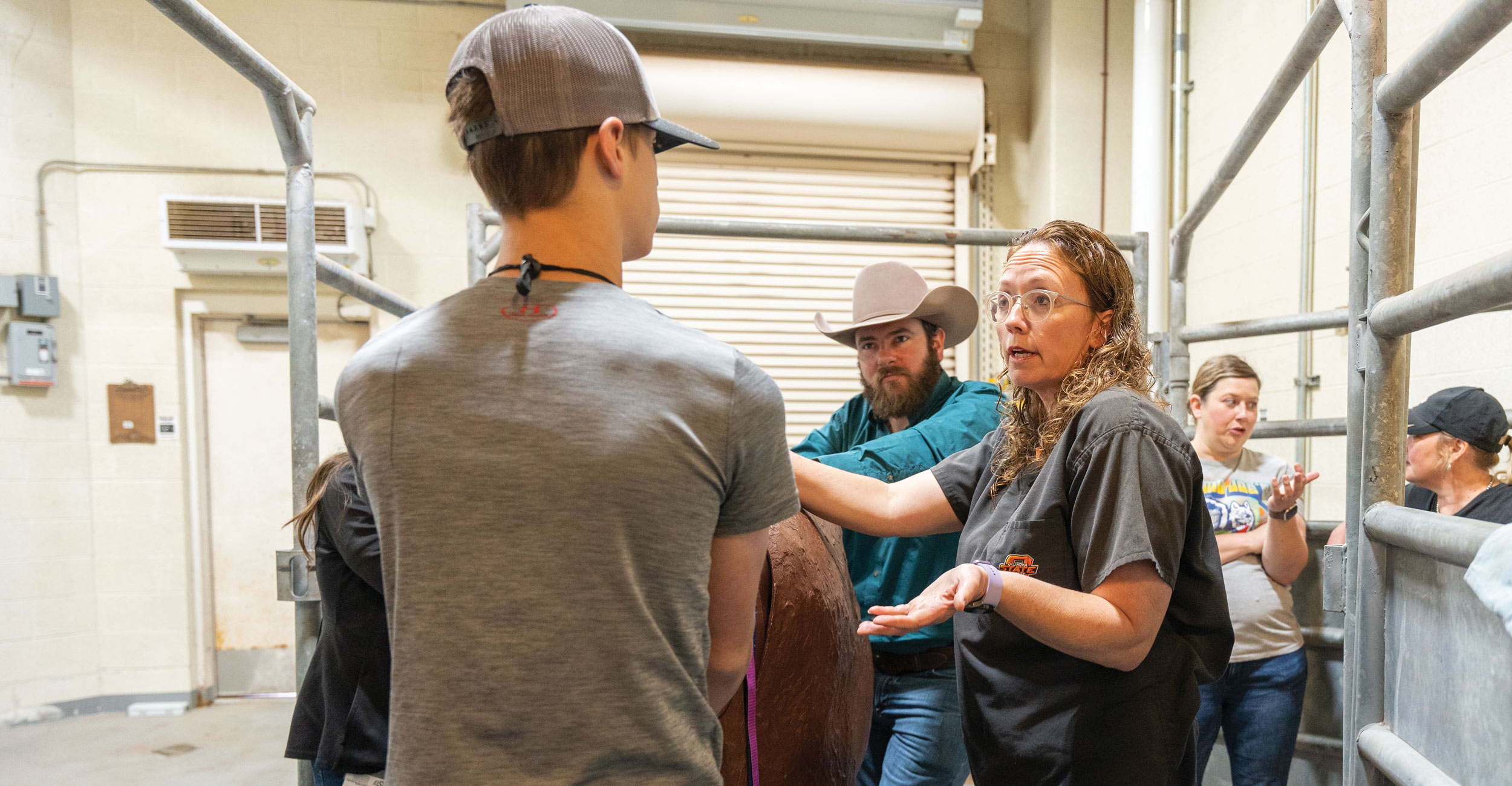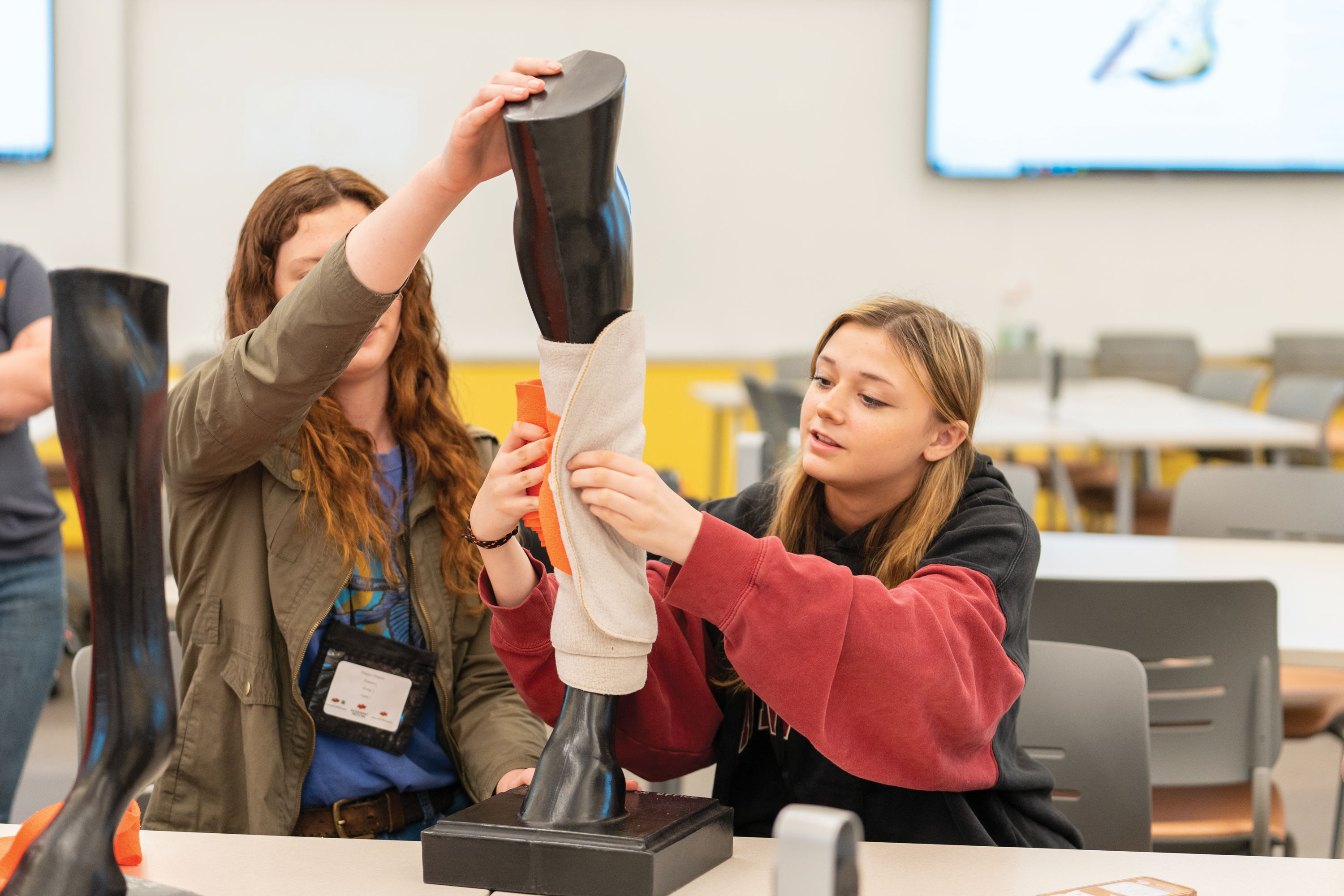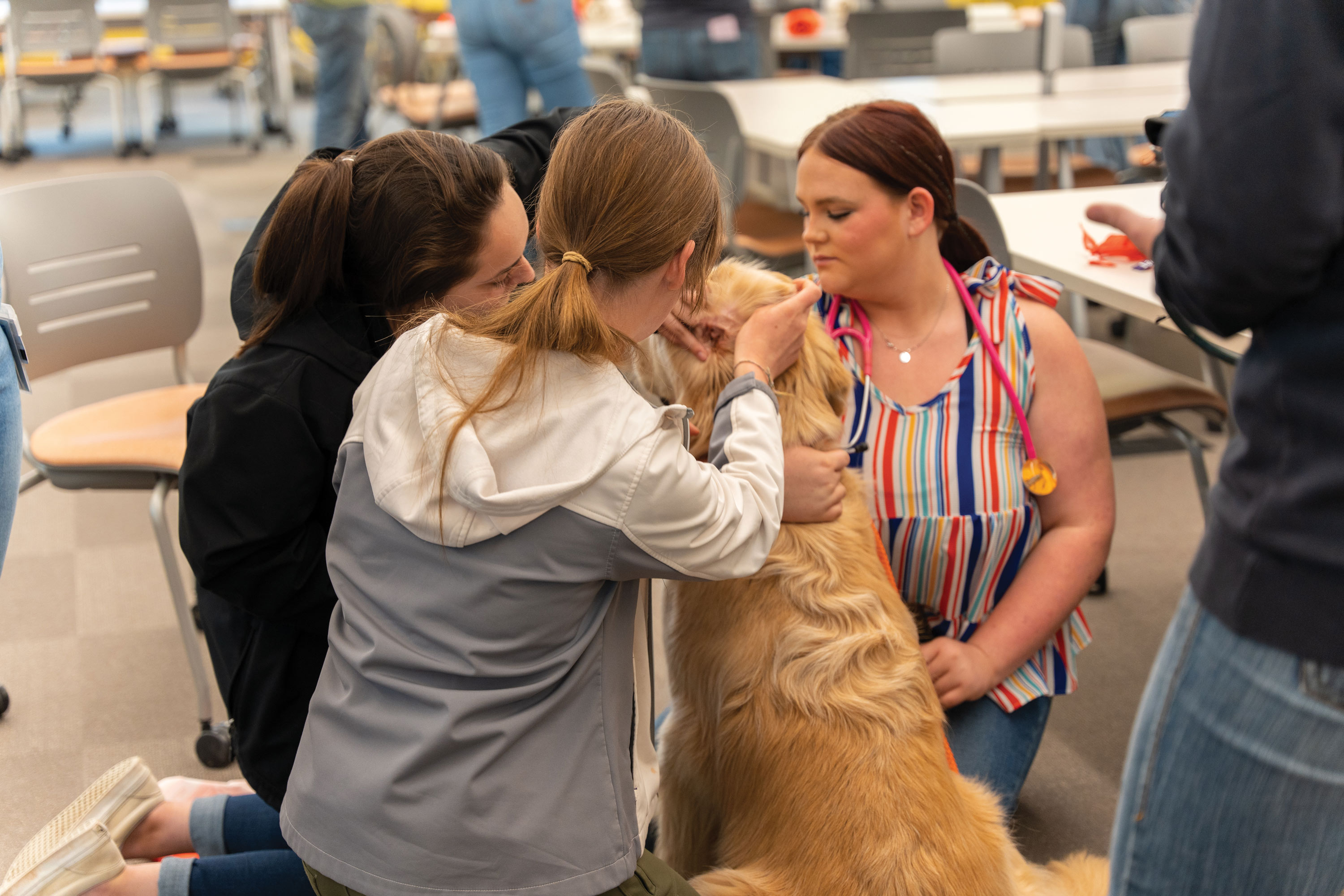
Where Passion Meets Practice: OSU veterinary medicine impacts Oklahoma 4-H'ers who attended vet science short course
Thursday, January 18, 2024
Media Contact: Taylor Bacon | Public Relations and Marketing Coordinator | 405-744-6728 | taylor.bacon@okstate.edu
The color of 4-H green and feeling of excitement flooded the Oklahoma State University College of Veterinary Medicine as 30 Oklahoma 4-H’ers jumped at the opportunity to explore animal health.
The two-day veterinary science short course hosted by Extension educators, Ferguson College of Agriculture and CVM faculty and staff on May 23-24 facilitated an environment for members to gain insight into veterinary school from current students and learn about career opportunities.

“This course was very eye-opening for 4-H’ers as they were able to go through the diagnostic lab, learn about reproduction and even see what it’s like for veterinarians to go through biosecurity when visiting farms,” said Summer Leister, Payne County 4-H educator.
Not only did the short course allow students to get hands-on experience, but it also provided them an opportunity to speak with seasoned veterinarians from across the state, Leister said.
“The 4-H veterinary science short course exposes young leaders from across Oklahoma to opportunities in veterinary medicine and animal health,” said Dr. Rosslyn Biggs, assistant clinical professor, beef cattle Extension specialist and director of continuing education at the CVM.
4-H members spoke with current CVM students, alumni and faculty members during a panel discussion where they learned about veterinary medicine career options.
“The thing that stood out the most was the variety of jobs and opportunities within veterinary medicine,” said Emma Armstrong, Payne County 4-H member. “Hearing from the panel of veterinarians was very helpful, one even stated that she spent two years in Europe doing research.”
“As a senior in high school, the vet science short course allowed me to understand what I should be doing in preparation for vet school.”
OSU alumni Drs. Yolanda Burton, Bret White, Amanda Wilson and Rocky Bigbie advocated for veterinary medicine during the short course.
Each person brought knowledge from a different area, allowing students to gain perspective on a variety of career possibilities.
“As a senior in high school, the vet science short course allowed me to understand what I should be doing in preparation for vet school,” Armstrong said.
The short course activities included small animal exams, calving simulations, disease outbreak simulation, animal anatomy and equine limb bandaging.
Dr. Jennifer Rudd, CVM assistant professor, facilitated a disease outbreak simulation where 4-H members dressed in personal protective equipment and played the role of a veterinarian during a disease outbreak on a swine operation.
Students were given symptoms the pigs were showing and the environmental factors at play. They then role-played and asked questions to determine the cause of the disease. After diagnosing it, Rudd helped students create a treatment plan.
Outside of the farm simulation, Pete’s Pet Posse brought in a few members for 4-H’ers to perform routine wellness exams on live animals. With the help of veterinary students, 4-H’ers listened to a dog’s heartbeat and asked the owner questions regarding its medical history.

Attendees dove into the large animal side of veterinary medicine by wrapping a horse’s leg and practicing an assisted delivery with a calving simulator. Biggs covered common cattle terminology and went through the birthing process of how a calf is born. It’s common for veterinarians to assist cows in labor to ensure a safe delivery, but each delivery is different based on the calf’s position.
Each 4-H member practiced safely delivering the calf and asked questions regarding birthing positions and equipment used to assist with delivery.
“The idea behind this was to essentially teach the whole process from beginning to end and expose 4-Her’s to the roles that veterinarians play,” Biggs said.
Armstrong expressed her excitement for the reproduction portion of the short course. 4-H members could also use the CVM anatomy lab, a major component of the first-year curriculum for veterinary students. Once in the lab, they were given the opportunity to dissect animal lungs, kidneys, eyeballs and hearts. Allowing 4-H’ers to utilize the lab provided insight into what they might experience as they begin their veterinary education.
“My favorite part of today was going into the anatomy lab and participating in the dissections,” said Emma Irwin, Pittsburg County 4-H member. “I take a class at Kiamichi Technology Centers, and we’ve done a bunch of dissections. Being able to see what I’ve studied allowed me to actually know what I was looking at. When I get to use what I already know, it is cool because I never thought I’d get to use it like that.”
Armstrong said programs and activities offered through 4-H have allowed her to have a better understanding of the veterinary industry and what will be expected of her in school.
The inaugural veterinary short course was a huge success and plans for 2024 are already underway.
“The interest in the program has been extraordinary and we are hopeful it will inspire attendees to pursue veterinary medicine as a career,” Biggs said.
Photo By: Taylor Bacon
Story By: Kinsey Reed | Vet Cetera Magazine
